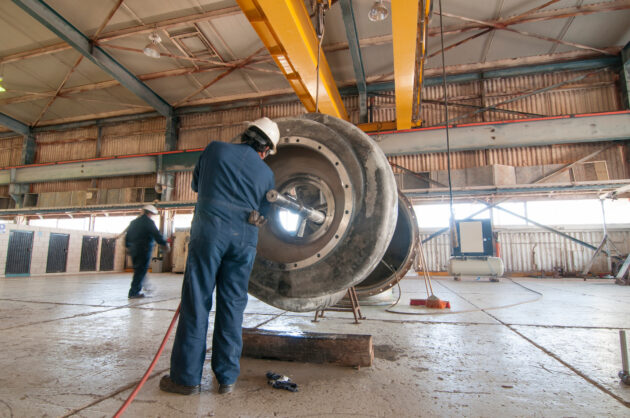
North American Leaders’ Summit 2023: The importance of manufacturing in Mexico
by Alejandro Lara Cruz, Board Member at American Industries Group

Sponsored by American Industries
Economic interdependence and regional integration have made North America more competitive internationally.

North American Leaders’ Summit 2023: The importance of manufacturing in Mexico
On January 9-10, 2023, United States President Joe Biden and Canadian Prime Minister Justin Trudeau met with Mexican President Andrés Manuel López Obrador in Mexico City for the 10th North American Leaders’ Summit or NALS. The Summit, which resumed this year after a 5-year hiatus, provides a forum to discuss the challenges and opportunities facing the three countries and provides a venue for the countries to create a coordinated approach to the development of trade policies that promote competitiveness, innovation, supply chain agility and resilience, and investment.
Economic interdependence and regional integration have made North America more competitive internationally. An increase in reshoring and nearshoring from Asia continues to solidify the region’s place as an economic powerhouse. Since the adoption of the North American Free Trade Agreement in 1994, which was renegotiated as the United States-Mexico-Canada Agreement (USMCA) in 2020, the North American trade bloc has grown to represent a third of global GDP.
During this time, manufacturing in Mexico has grown steadily, playing a pivotal role in the domestic and regional economies due to the variety of benefits it offers, including the country’s trained and affordable labor force. The sector grew by 30% in just the first nine months of 2022 compared to the same period in 2021, with one of the most important industries being the automotive and auto parts industry. Automotive manufacturers in Mexico are leading the way in supply chain regionalization and are poised to take advantage of the opportunities offered by the adoption of electric vehicle technologies and investments being made by semiconductor companies.

Flags of United States, Mexico, Canada flying together, concept of new NAFTA agreement now known as USMCA in the U.S., CUSMA in Canada or T-MEC in Mexico.
Manufacturing in Mexico and regional supply chains
As the most labor-rich and cost-efficient country in North America, Mexico has become especially attractive to foreign companies looking to set up or relocate manufacturing to serve the US market. In addition, the country’s geographic location means 80% less shipping times and costs compared to China, and its well-developed, safe, and accessible network of air, land, and rail infrastructure means that companies have various options for transporting goods depending on what best meets their needs.
Mexico, serves as a springboard for firms looking to access cheaper production sources while utilizing the existing infrastructure already in place. This investment and development of its manufacturing industry over the last half-decade has had a positive effect on the entire region, encouraging shared economic growth, jobs, processes, and overall efficiency.
Importance of the automotive industry in Mexico
The industry is so crucial to trade in North America that several provisions were included in the USMCA aimed at ensuring long-term stability for automakers. These include allowing auto parts to move freely between the three countries and granting assurance that no new tariffs will be placed on vehicles imported from Mexico (or Canada).
This year’s Summit provided an occasion to discuss the importance of this industry and how to better leverage Mexico’s potential to benefit all three countries. This is particularly relevant in light of recent changes to the USMCA, with some of the most important modifications to rules of origin for the auto industry. Core parts must now use 75% regional content, which is an increase from 62.5% under NAFTA. This, and other geopolitical factors, such as recent disruptions in global supply chains and transport and container shortages, sparked significant growth in the automotive industry in Mexico. In 2022,12.1 billion dollars of investments were made in new projects, expansions, and acquisitions, representing a 185% increase from 2021.
Another significant opportunity for the automotive industry is the development of electric vehicles and components and semiconductors. Recently, the US congress approved legislation that will provide approximately 52 billion dollars of investment for the semiconductor industry through incentives for electric vehicles, batteries, and other products manufactured in North America. With these investments, industry is counting on having the necessary supply chain infrastructure in Mexico.
Continued growth in Mexico’s manufacturing ecosystem
The rapid expansion of nearshoring and allyshoring show just how far the country has advanced in recent years. This trend has led to an increase in the complexity of Mexico’s manufacturing ecosystem, including low-cost production, complex value chains, and an increasing number of suppliers, providing greater benefits for international companies’ and significant opportunities. Businesses gain access to specialized skills and services while at the same time leveraging their cost advantages.
The future of manufacturing in Mexico
At the Summit, the leaders discussed ways to strengthen economic cooperation, bolster resilience, and promote innovation within the North American trading bloc. Notably, agreements were reached to encourage investment in Mexico’s manufacturing sector, particularly in the automotive industry, to capitalize on the country’s low-cost manufacturing capabilities and its proximity to its two North American neighbors. The leaders also agreed to continue to develop joint strategies to reduce regulatory barriers, enhance infrastructure, and improve intellectual property protections, all of which play an important role in Mexico’s success as a manufacturing center. One of the concrete agreements was to establish a joint committee aimed at planning and substituting imports in North America to make the region more self-sufficient.
Learn more about why will manufacturing in Mexico be a competitive advantage for you in the following link: https://bit.ly/3WHXoZE